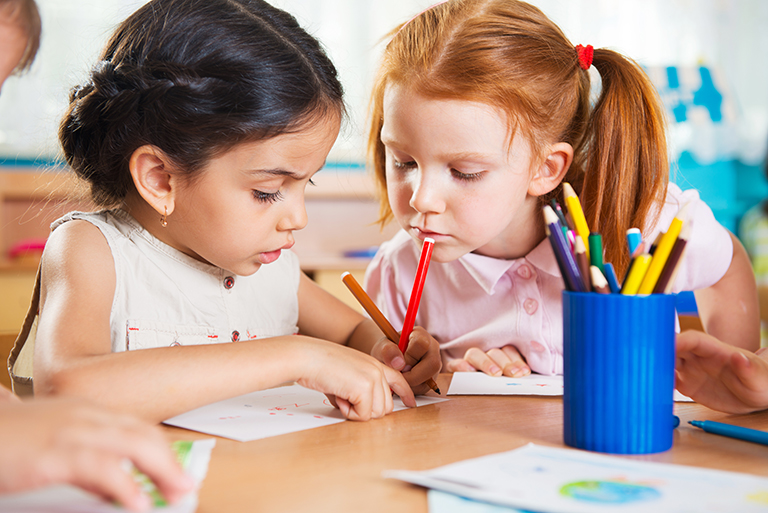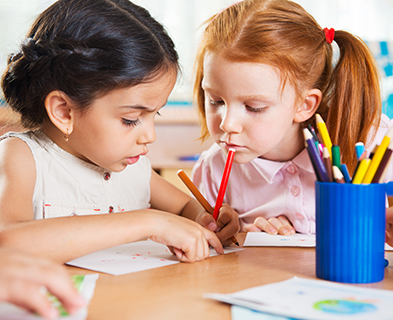“I can still remember,” Albert Einstein quotes, “that this experience made a deep and lasting impression upon me. Something deeply hidden had to be behind things.”
In the book Internet Invention: From Literacy to Electracy, author Greg Ulmer writes about Albert Einstein and how a pivotal event in his childhood inspired his interest in science. Einstein was four or five years old and stuck in bed with an illness when his father gave him a magnetic pocket compass. He played and spent hours twisting it, wondering how the needle always knew to point towards the north.
In this blog, we provide some insights into how babies and young children learn and how we, as adults, can support their development.

Young children learn by exploring in a safe and stimulating environment
According to Facts for Life, a child’s brain develops rapidly during the first five years of life, especially cognitive, linguistic, social, emotional and motor development skills. They learn many words starting at around 15–18 months and this rapid language learning continues into the preschool years.
The child’s brain grows as she or he sees, feels, tastes, smells and hears. Each time the child uses one of the senses, a neural connection is made in the child’s brain. New experiences repeated many times help make new connections, which shape the way the child thinks, feels, behaves and learns now and in the future.
Parents, family members and other caregivers (like preschool teachers) can support healthy brain growth by speaking to, playing with, and caring for their child. When you play with and sing, speak, read or tell a story to your little one and nurture her or him with healthy food, love and affection, the child’s brain grows.
Young children learn through doing aka play
In her TedX Talk, Professor Doris Fromberg, Director of Early Childhood Teacher Education at Hofstra University, explains why play is such an important part of the learning process for children.
She says “We need to consider that young children learn in quite differently than adults. They learn by comparing physical experiences, by interactions with other people and their own feelings. And they learn an enormous amount through their imagination…. Play is what pulls together the logical and creative parts of the brain. Play is important because it allows your kiddos to practice skills over and over again in their own time and to develop ideas at their own pace.”
In a similar study conducted in 2013, University of Denver researchers Elena Bodrova, Carrie Germeroth, and Deborah J. Leong found that children teach themselves to regulate their emotions and think before they act when they play. For example, if a child is pretending to be Olaf from Frozen, they may pretend they’re melting when they come inside or insist that they like warm hugs. In each case, they consider how their actions will correlate with how Olaf should act in a given situation.
This role playing helps young children build social skills and helps them become the kind of adults who are able to thrive in a range of personal and professional environments.
We hope to have helped you understand how young children learn and how adapting our teaching or parenting style to meet their needs in more effective manner, thereby leading to a happy child!
Young children learn through story time
According to a recent research conducted by U.S. Department of Health & Human Services, young children need to hear language even before they can talk to support brain development. Furthermore, with language, both quantity and quality matter. The quantity of words that children hear is important for language development, but so is the quality of language that they hear. Quality of language can refer to word diversity and to the speech signal.
Read out loud, every day, several times a day. Any book. You can read anything to a newborn: a cookbook, a novel, or even a parenting manual. The content doesn’t matter. What does matter is the sound of your voice, the cadence of the text and the words themselves. Research has shown that the number of words an infant is exposed to has a direct impact on language development and literacy.
When you read with toddlers, they take it all in: vocabulary and language structure, numbers and math concepts, colors, shapes, animals, opposites, manners and all kinds of useful information about how the world works. What’s more, when you read out loud, your toddler connects books with the familiar, beloved sound of your voice — and the physical closeness that reading together brings. You are helping build a positive association with books that will last a lifetime.

